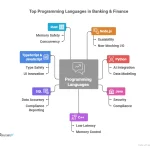
While changes in the S P 5 00 affect many people’s retirement and investment plans, even individuals who are unlikely to have to sell their house unless someone close to them passes away should pay attention.
Instead of minimising the costs or urging quick action, financial professionals can help frame homebuying decisions in terms of people’s existing financial plans, and show prospective buyers how a mortgage fits into (or conflicts with) their finances today and might affect them in the future.
Keep an Eye on Interest Rates
Volatility is the inherent nature of the market but as interest rates increase and remain elevated, investors need to learn how to manage through volatility and make disciplined investment decisions. For example, as you look to buy your ideal home, you need to take into account the increasing rate of interest because this may affect the amount of the mortgage that you are willing to pay.You ought to try to get the lowest rate as soon as possible so as not to be surprised by the higher monthly payments in the future. You should, however, also lock rates while building your pipeline, and allow for flexible prepayment policies. A VVOE policy might be especially helpful if one of your borrowers could experience a shrinking income stream – so that rates don’t have to be renegotiated in an already unfriendly market.
Stay on Top of Your Payments
With mortgage rates at an all-time high, you need to be extra careful to make the payments on time so you don’t pay more interest than expected. Get ahead by paying a little extra every quarter or splitting your monthly payment in two to submit every two weeks, as this would give an extra payment a year and speed up the pace of the loan pay-off. Or ask your lender for a payment holiday.
Take Advantage of Short-Term Forbearance Clauses
Mortgage forbearance can be a lifesaver in a tight spot by removing some of the pressure from monthly mortgage payments. But for the plan to work and go smoothly, borrowers must be able to read and understand every line of the forbearance agreement, including the start and end date, as well as the commitment to pay back all of that line of credit or term loan debt when it’s over. After the end of forbearance, servicers should evaluate each borrower for a number of solutions that would help the borrower to make up any missed payments. These might include repayment plans whereby borrowers can pay off the amount that they have missed over time, or reinstatement, whereby all amounts owed during forbearance must be paid backed in one lump sum. Borrowers might also receive relief under deed-in-lieu of foreclosure agreements, which are reached between the borrower and the servicer when the borrower voluntarily surrenders the property to the servicer to stop the foreclosure process. Still, neither of these are optimal outcomes, and deeds-in-lieu help borrowers avoid it.
Be Prepared for Changes
Markets do change from time to time: be ready for them.Market changes are a given, but it is important to spot them early, so you should have a keen eye for them and (crucially) respond quickly to any signs of change. This is not rocket science but, to do it properly, you need to know precisely how to look and be alert for the factors that are likely to signal a change. You’ll also want to keep an eye on industry bulletins and webinars, and keep an eye out for signs that you might be entering a down market so that you can take action to protect your business. As a result, using data fabrics and automation can help ‘turbocharge’ mortgage processing times (which, in times like today, might serve to help a smooth home sale go through). As a result, use of a VVOE systems also becomes more useful for avoiding those risk potential borrowers. Admittedly, we are in rough waters and market volatility can be upsetting; however, sticking to these best practices can help you with your mortgage in this turbulent market and can also help you grow your business. Staying on track with your information, looking at ways to diversify your portfolio, looking at ways of shifting your priorities towards quality and sustainability (which is better than ‘thickness’ or ‘numbers’) and leveraging technology to grow your relationship and foster connection – these can all help you stay afloat and navigate our way out of these muddy and choppy waters.





